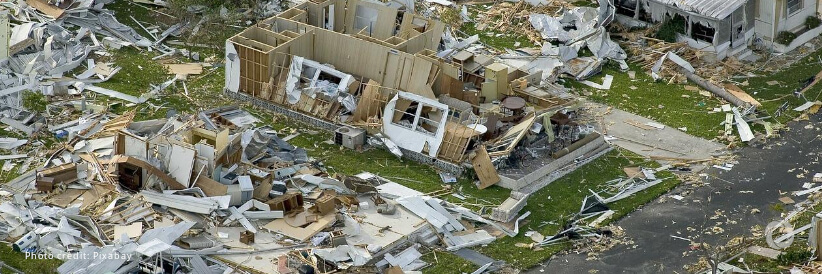The Caribbean is the second-most disaster-prone region in the world and is highly exposed to natural hazards such as hurricanes and tropical storms, floods, landslides, and storm surges. These hazards pose a risk to life and economic loss. To combat this, US 7 million dollars in funding for a new three-year project in the Caribbean region has been granted by the Climate Risk and Early Warning Systems (CREWS) Initiative.
The CREWS Caribbean 2.0 project will build on a recently completed project to continue strengthening early warning systems in the region. The project will be led by WMO and UNDRR, and implemented under the leadership of key regional organizations including the Caribbean Meteorological Organization (CMO), the Caribbean Disaster Emergency Management Agency (CDEMA), and the Caribbean Institute for Meteorology and Hydrology (CIMH). Other major partners include the International Federation of Red Cross and Red Crescent Societies (IFRC), the International Telecommunications Union (ITU) as well as the Caribbean Chamber of Commerce (CARICHAM).
Approval for the project followed a collaborative and inclusive project development process which was completed at the CREWS Caribbean Partners Meeting, held in Trinidad and Tobago in November 2023. The meeting secured the final endorsement of the proposed activities from key regional partners. It was hosted by the CMO and CDEMA and convened over 47 members of the Regional Early Warning Consortium (REWSC), which will function as Project Steering Committee, as well as the President of the WMO Regional Association IV and CREWS Steering Committee Members and partners.
Effective Multi-Hazard Early Warning Systems (MHEWS) in the Caribbean region can only be made possible through the strong leadership of strengthened NMHSs, with the alignment of NDRMOs, who integrate co-design and delivery approaches in their services. This will enable improved disaster risk knowledge, better monitoring and forecasting, stronger warning and dissemination capabilities, and enhanced response capabilities of individuals, communities, business institutions, and organizations, with a particular focus on reaching and involving the last mile and the most vulnerable groups.
The main objective of CREWS Caribbean 2.0 is to enhance the operational capacities of NDRMOs and NMHSs, through regional cooperation and improved governance mechanisms conducive for users to participate and be engaged in the design and delivery of early warnings. The project will focus on strengthening MHEWS Governance on a regional level, improving disaster risk knowledge on the regional, national, and community levels, strengthening NMHs service provision, with a special focus on marine, severe weather, and hydrological capacities, strengthening warning dissemination and reinforce early action at the community level.
In doing that, the project will contribute to the goals of the Early Warning for All (EW4All) Initiative and other international frameworks, such as the SDGs, the Sendai Framework for Disaster Risk Reduction 2015-2030, or the Paris Agreement, while applying inclusive and gender-responsive approaches, to ensure that those most at risk are engaged meaningfully in the development of MHEWS. The project will further build on the outcomes and achievements of CREWS Caribbean 1.0.

